Industrial engineers design and analyze the flow of goods and services in order to optimize overall supply chain performance.
Faculty
Suchi Rajendran, Sharan Srinivas, Jim Noble
- Optimizing Forecasting and Inventory Policies in a Make-to-Order Production Environment
Jim Noble
- Integrated Inventory Segmentation Strategies for Management of Service Parts
Jim Noble
- Relation-based Item Slotting with Space Constraints
- Integrated Material Flow Analysis
Omid Shahvari
- Sustainable Design of an On-demand Supply Chain Network
Sharan Srinivas
- Improving Inbound Logistics Operations to Reduce CO2 Emissions
Projects
Optimizing Forecasting and Inventory Policies in a Make-to-Order Production Environment

Integrated Inventory Segmentation and Optimization for Fill Rate Service Parts
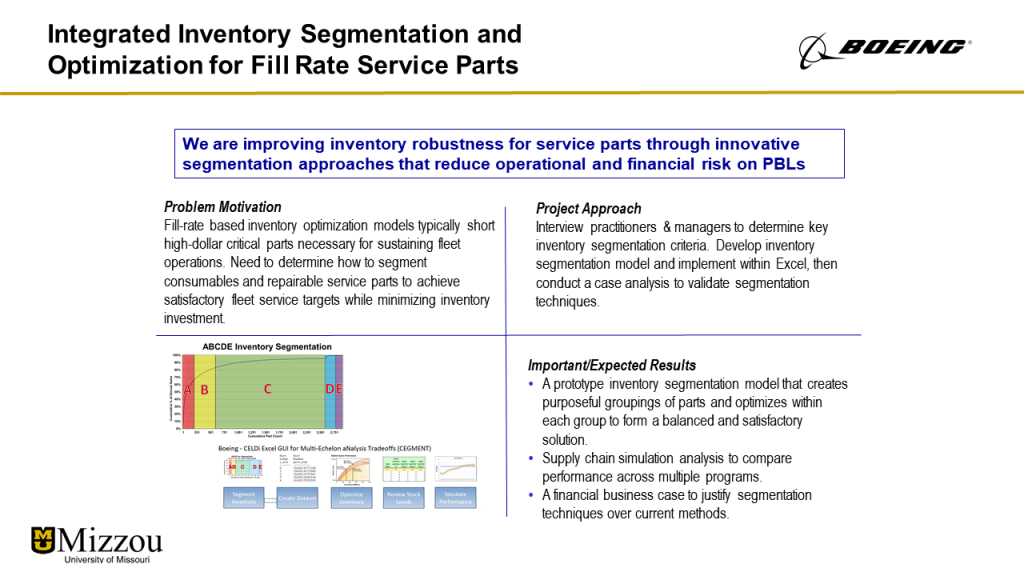 Problem Motivation
Problem Motivation
Fill-rate based inventory optimization models typically short high-dollar critical parts necessary for sustaining fleet operations. Need to determine how to segment consumables and repairable service parts to achieve satisfactory fleet service targets while minimizing inventory investment.
Important/Expected Results
- A prototype inventory segmentation model that creates purposeful groupings of parts and optimizes within each group to form a balanced and satisfactory solution.
- Supply chain simulation analysis to compare performance across multiple programs.
- A financial business case to justify segmentation techniques over current methods
Relation-based Item Slotting with Space Constraints
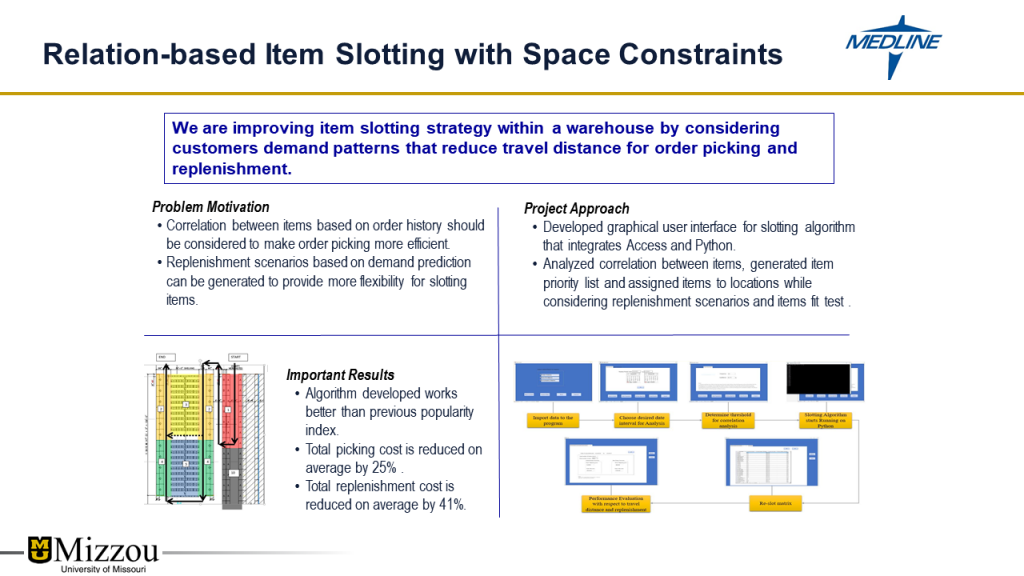 Problem Motivation
Problem Motivation
- Correlation between items based on order history should be considered to make order picking more efficient.
- Replenishment scenarios based on demand prediction can be generated to provide more flexibility for slotting items.
Important Results
- Algorithm developed works better than previous popularity index.
- Total picking cost is reduced on average by 25% .
- Total replenishment cost is reduced on average by 41%.
Integrated Material Flow Analysis
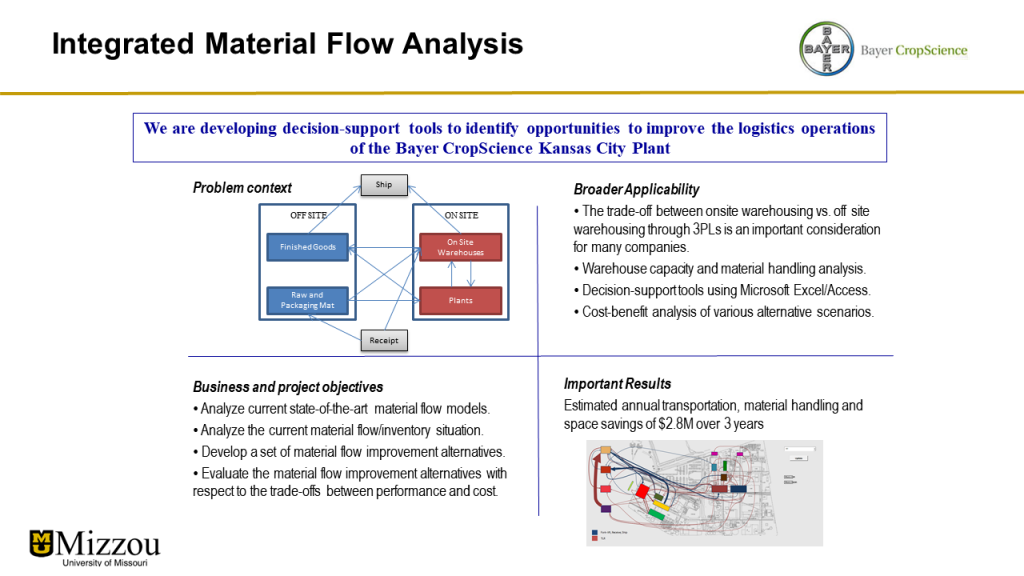 Business and project objectives
Business and project objectives
- Analyze current state-of-the-art material flow models.
- Analyze the current material flow/inventory situation.
- Develop a set of material flow improvement alternatives.
- Evaluate the material flow improvement alternatives with respect to the trade-offs between performance and cost.
Important Results
- Estimated annual transportation, material handling and space savings of $2.8M over 3 years
Sustainable Design of an On-demand Supply Chain Network
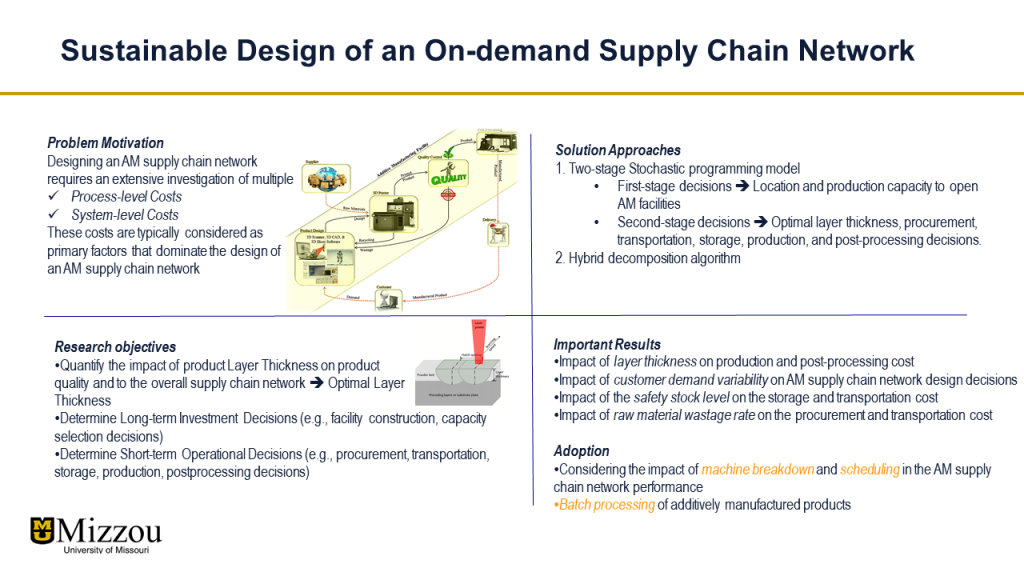 Research objectives
Research objectives
- Quantify the impact of product Layer Thickness on product quality and to the overall supply chain network -> Optimal Layer Thickness
- Determine Long-term Investment Decisions (e.g., facility construction, capacity selection decisions)
- Determine Short-term Operational Decisions (e.g., procurement, transportation, storage, production, postprocessing decisions)
Important Results
- Impact of layer thickness on production and post-processing cost
- Impact of customer demand variability on AM supply chain network design decisions
- Impact of the safety stock level on the storage and transportation cost
- Impact of raw material wastage rate on the procurement and transportation cost
Improving Inbound Logistics Operations to reduce CO2 Emissions
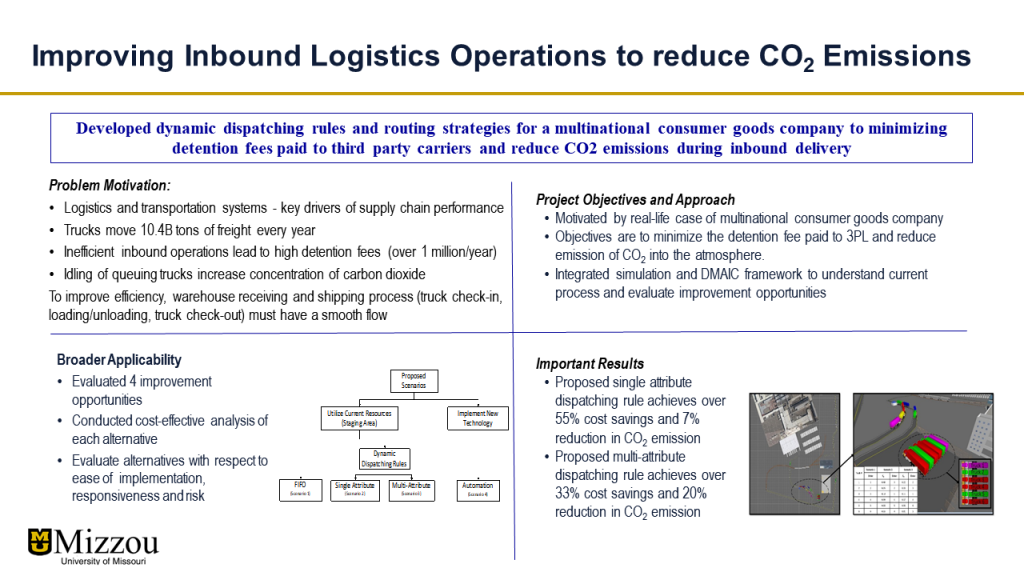 Project Objectives and Approach
Project Objectives and Approach
- Motivated by real-life case of multinational consumer goods company
- Objectives are to minimize the detention fee paid to 3PL and reduce emission of CO2 into the atmosphere.
- Integrated simulation and DMAIC framework to understand current process and evaluate improvement opportunities
Important Results
- Proposed single attribute dispatching rule achieves over 55% cost savings and 7% reduction in CO2 emission
- Proposed multi-attribute dispatching rule achieves over 33% cost savings and 20% reduction in CO2 emission